- Digital Development is divided into four groups. The HDR Pre-Stretch Scale controls are used to map the image to different parts of the digital development stretch curve. Mapping the image data to different parts of the stretch curve allows great control over the brighness and contrast of the stretch applied to the background, midtones, and highlights. The DDP Stretch control group is used to control the shape of the stretch function and also background brightness and contrast. The Color Emphasis controls are used to maintain star color that is compressed by aggressive stretch functions. The Sharpening controls provide an optional increase in sharpeness and are not used in this example.
- A set of 17 x 10 minute light frames, 10 flat, 10 dark, and 10 bias frames of M13 were collected using a 203mm F9 TMB reduced to F7 with a Canon 5D MII. After calibration the light frames were normalized, aligned, and stacked with excluded min max average using the methods described by DSLR Automatic Image Set Processing or CCD Automatic Image Set Processing.
- The stacked image of M13 is very dark and shown below. The goal is to brighten or stretch the image of M13 so that the faint outer stars are shown and the bright core is not over stretched. Star color is also increased.
Initial very dark stacked color image of M13. The dark background will be stretched to show faint outer stars without over stretching the bright core. Star color will be increased.
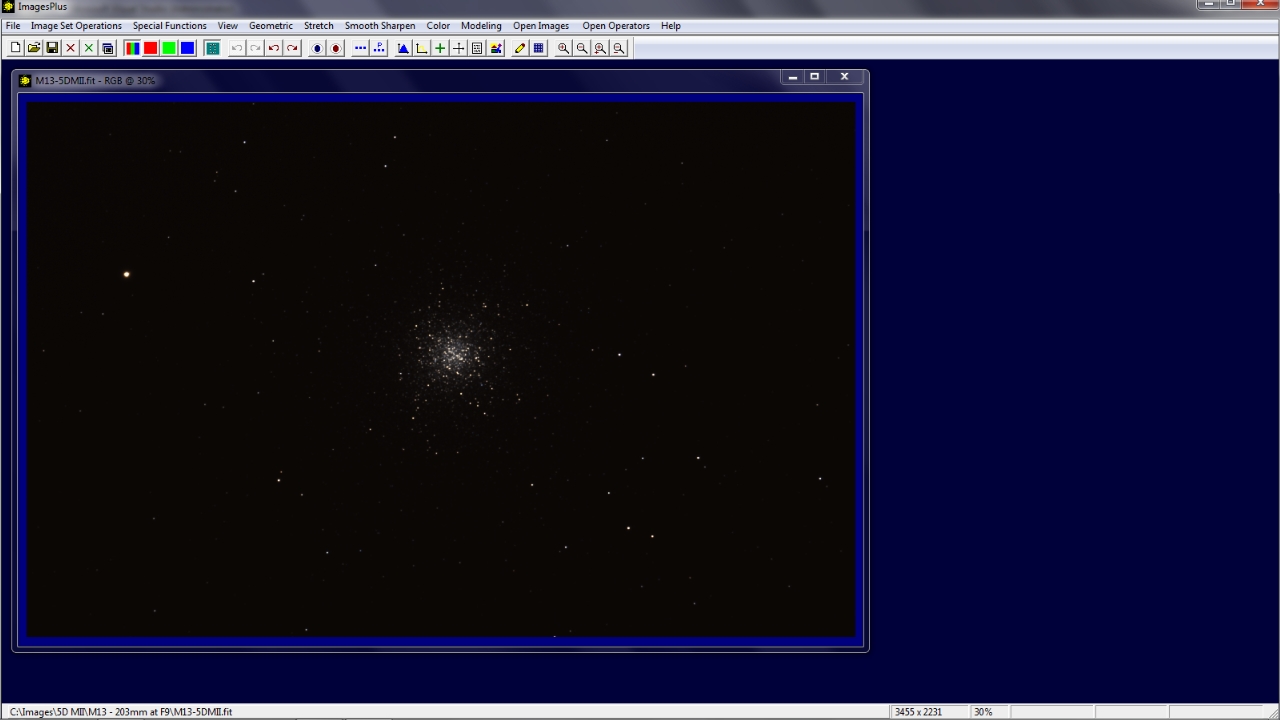 |
Step 1
- The Stretch | Digital Development function is used to increase brightness and contrast of the dark background without over stretching the bright core of M13.
- First move the Break-Points Highlight slider to the left until the bright core looks properly stretched. At this point only focus on the bright core.
Break-Point Highlight is set to 7784. If the Break-Point slider is too sensitive for a given image then use the Break-Point Range list to adjust slider sensitivity to match the image.
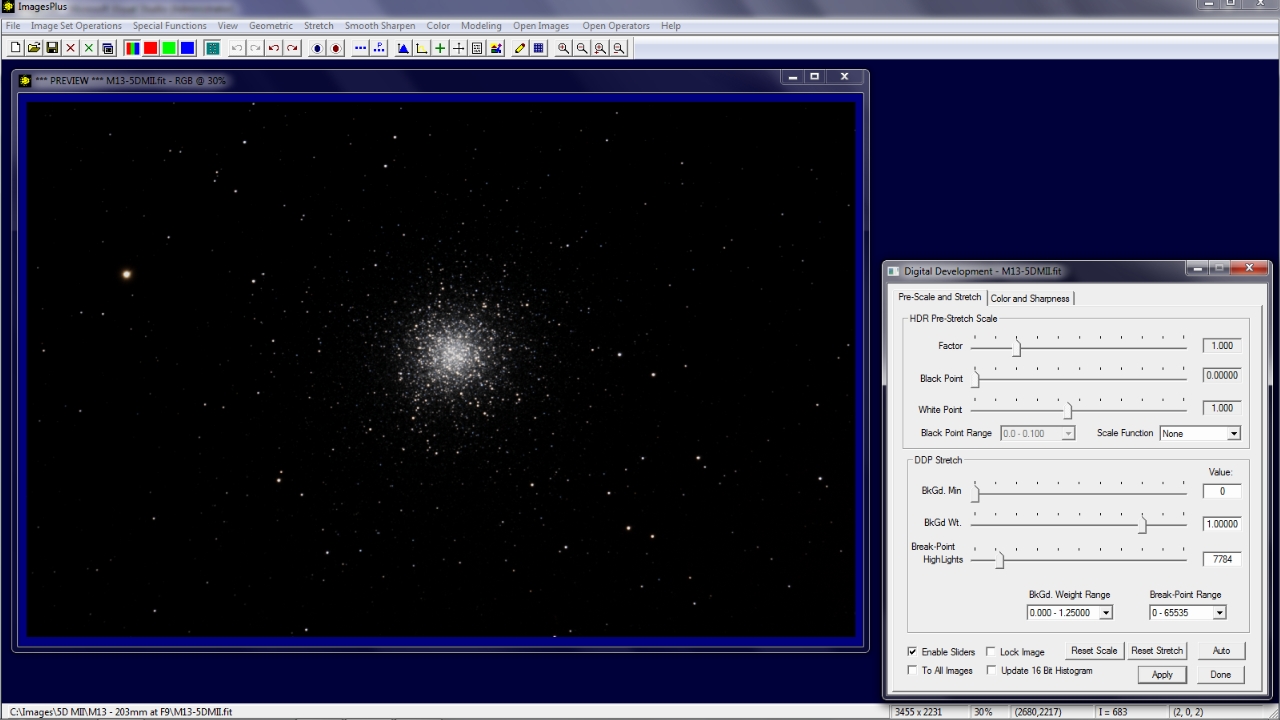 |
Step 2
- Next adjust the Background Weight slider in the DDP Stretch control group to the left to even the background all the way to the image edge.
The Background Weight slider has been moved to the left to 0.96462 to even the background. If the slider is too sensitive use the Background Weight Range list box to adjust the slider sensitivity to match the image. The stretch will be adjusted to show faint outer stars and color.
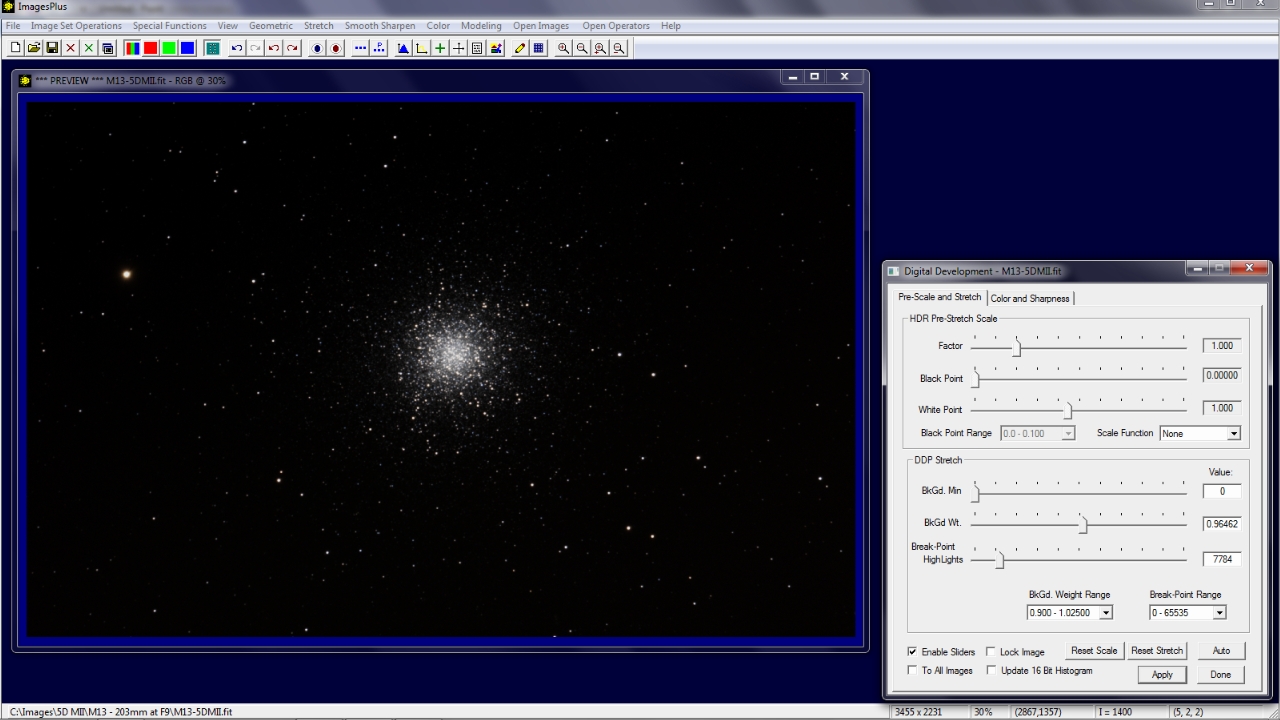 |
Step 3
- The controls in the HDR Pre-Stretch Scale group will be used next to increase the stretch applied to M13 and the background stars. A linear pre-stretch scale could be used but both the background and core would be be increased in brightness. The faint outer stars of M13 require much more of a stretch than the core so a Nth Root pre-stretch scale is used to boost the outer area of M13 and maintain the core stars. But color is compressed by the aggressive stretch.
Nth Root pre-stretch scale is used with Power = 0.795. As a result background star brightness is increased with an increase of contrast. Very little additional stretch is applied to the core of M13. Color is still compressed and will be addressed next.
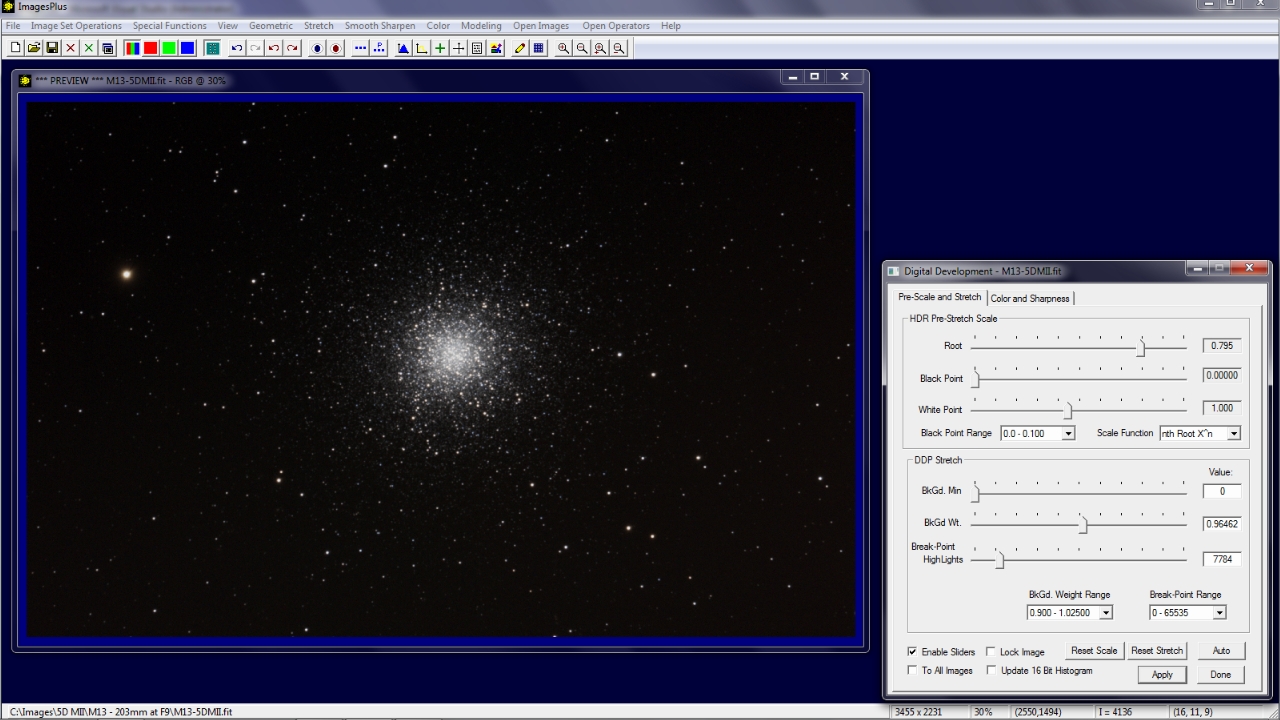 |
Step 4
- The Color Emphasis controls are used next to counter color compression from an aggressive stretch.
Red, green, and blue color emphasis are enabled and adjusted to uncompress the star color of M13. The image is now ready for fine color adjustment.
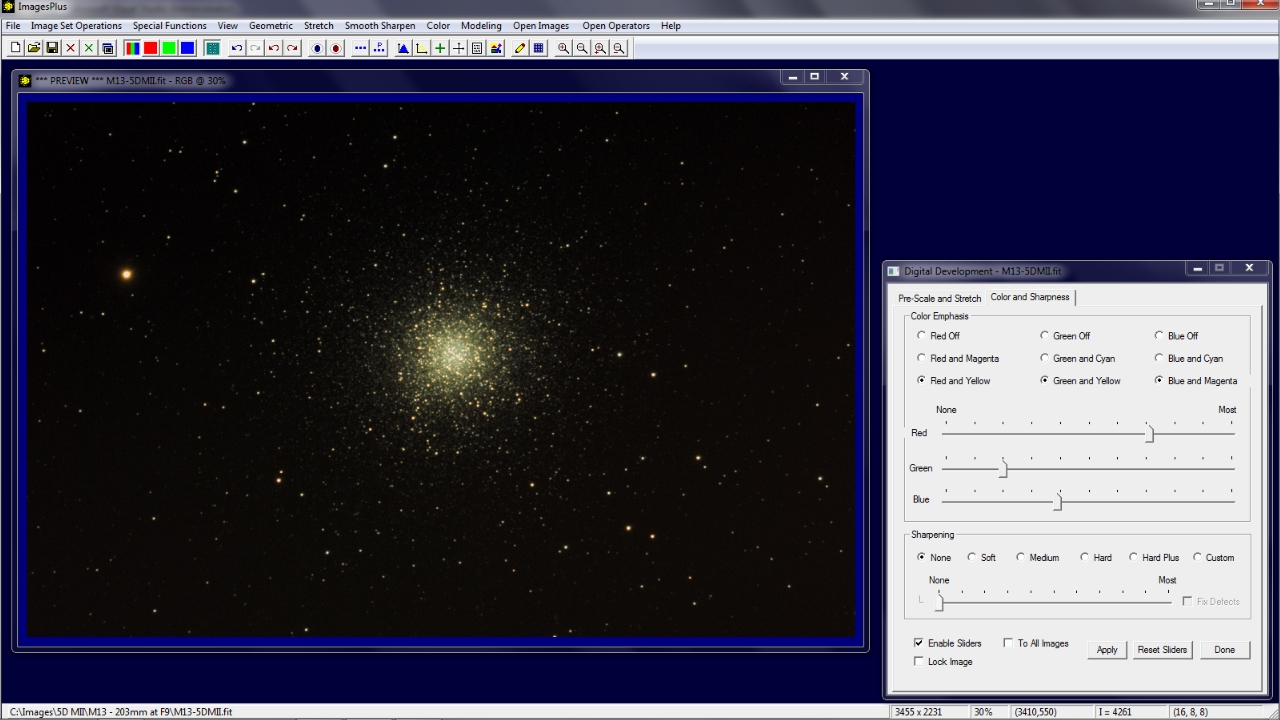 |
Step 5
- The Histogram tool is used to inspect pixel distribution after digital development.
Typical smooth histogram of a well stretched image without clipped background.
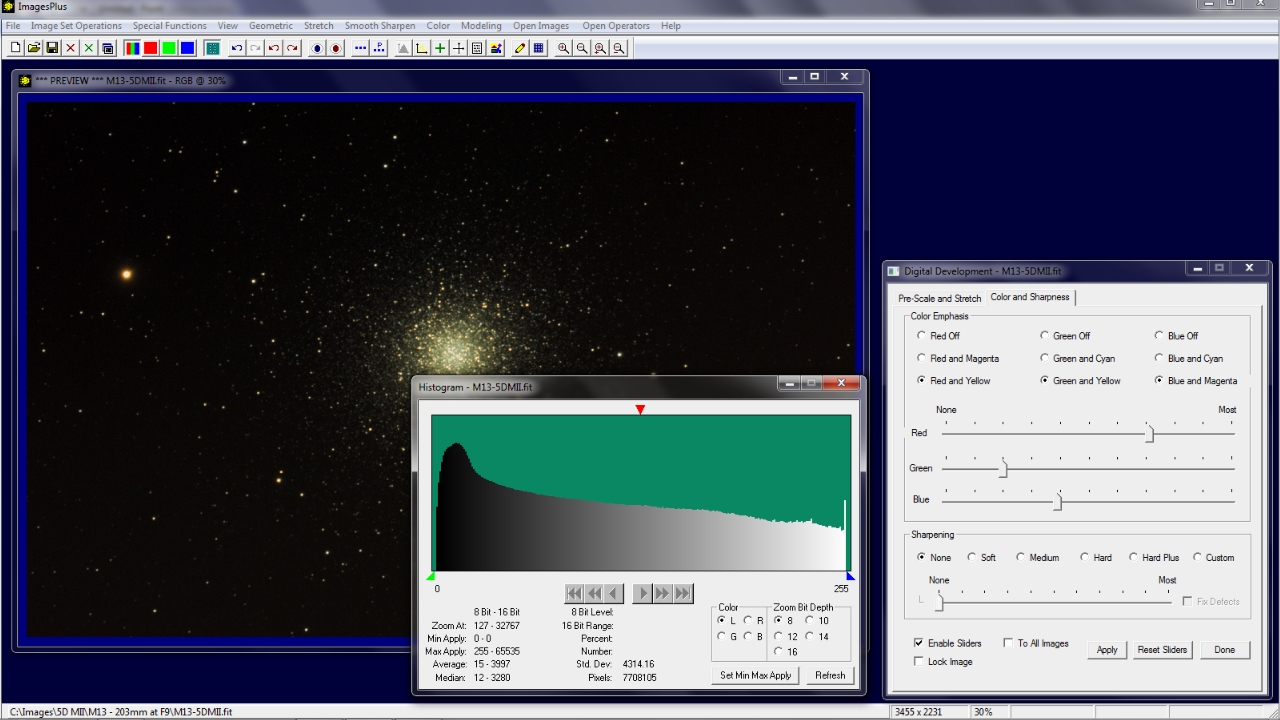 |
Final digital development stretched image with color emphasis ready for fine color adjustment.
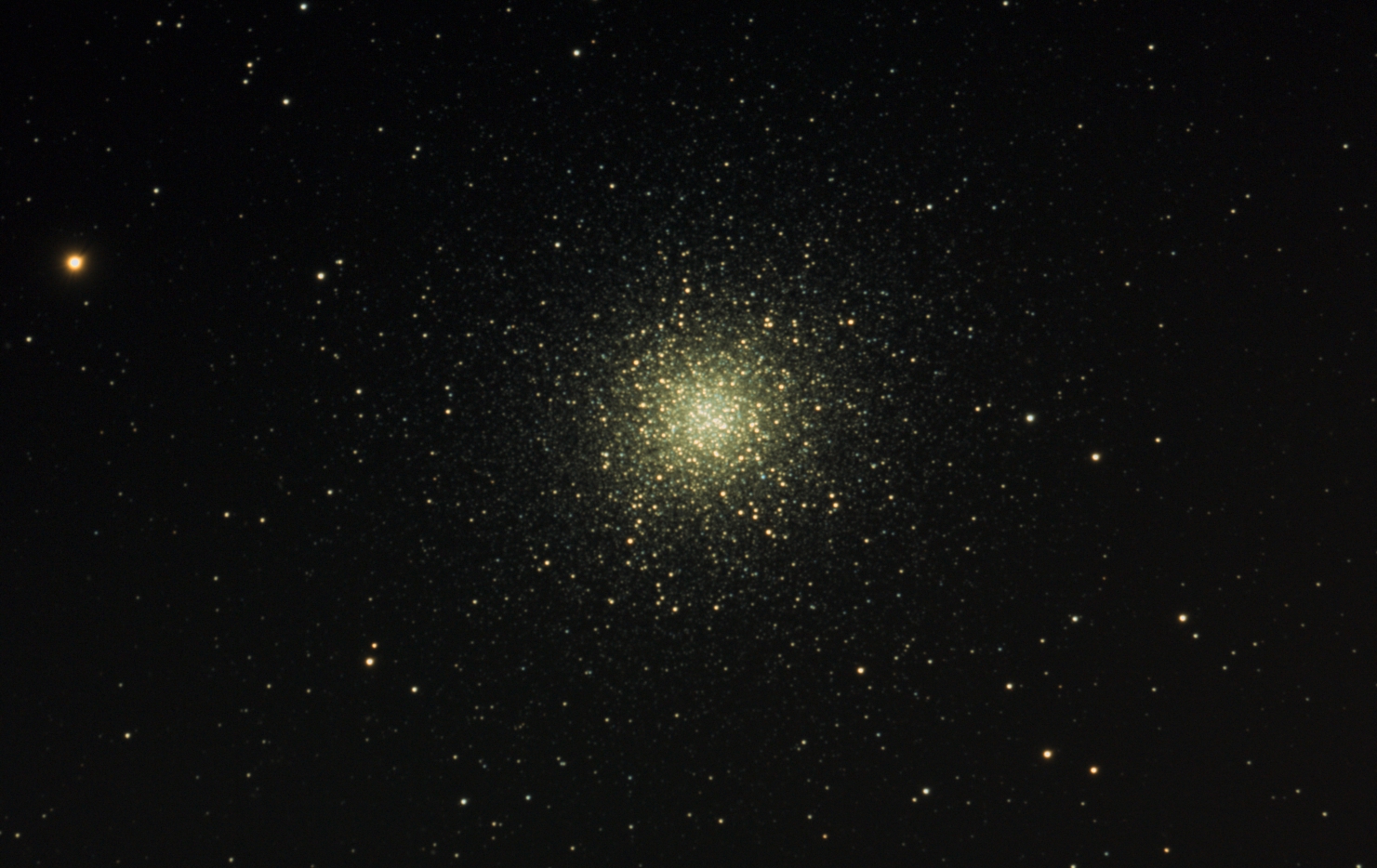 |
Copyright © 2011 MLUnsold Digital Imaging. All Rights Reserved.







